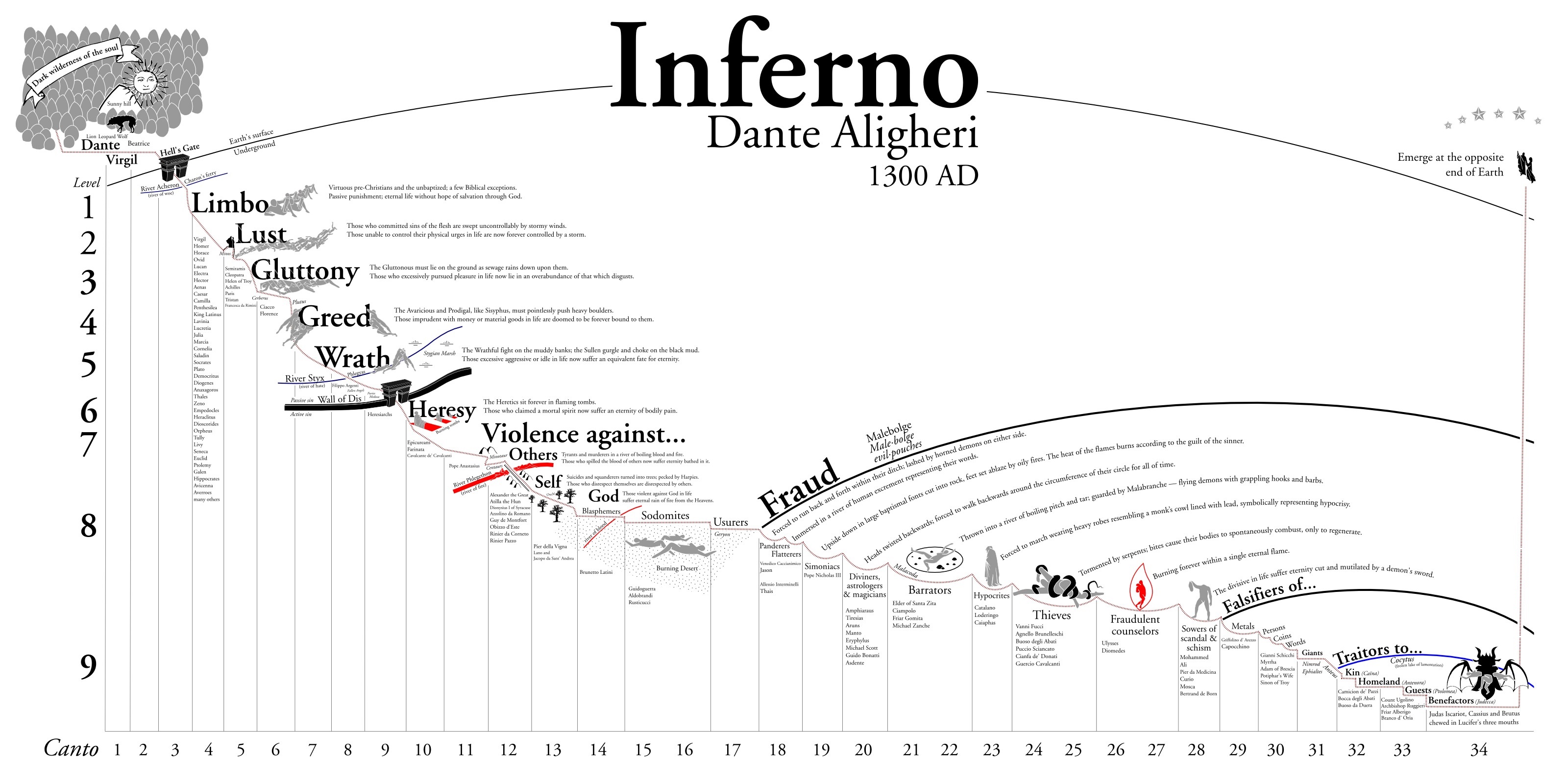The Inferno: A Journey Through Dante's Hell
"The Inferno: A Journey Through Dante's Hell" is a classic work of Italian literature by Dante Alighieri, first published in the early 14th century. It is the first part of Dante's Divine Comedy, an epic poem that explores the afterlife and the nature of sin and punishment.

Soul Journey through the Tarot | Book by John Sandbach | Official - Source www.simonandschuster.net
Editor's Notes: "The Inferno: A Journey Through Dante's Hell" have published today date
In "The Inferno," the poet Dante is guided by the Roman poet Virgil through the nine circles of Hell, encountering various sinners and punishments along the way. The poem is a powerful and evocative depiction of the horrors of Hell, and it has had a profound influence on Western literature and culture.
Key Differences or Key Takeaways
| Characteristic | The Inferno |
|---|---|
| Author | Dante Alighieri |
| Date of Publication | Early 14th century |
| Genre | Epic poem |
| Setting | Hell |
| Characters | Dante, Virgil, and various sinners |
| Themes | Sin, punishment, redemption |
Main Article Topics
- The structure of Hell
- The different types of sinners and their punishments
- The role of Virgil as Dante's guide
- The significance of "The Inferno" in Western literature and culture
FAQ
Seeking to clarify common inquiries regarding Dante's "Inferno," this FAQ section provides comprehensive answers to frequently asked questions.
Question 1: Who was Dante Alighieri, and what is "Inferno"?
Dante Alighieri was an Italian poet born in the 13th century. "Inferno" is the first part of his epic poem "The Divine Comedy," a literary masterpiece describing Dante's journey through Hell, guided by the Roman poet Virgil.

Dante's Inferno Circles Of Hell Tour Guide by REDVAMPIRE120652 on - Source www.deviantart.com
Question 2: What is the significance of the number nine in "Inferno"?
The number nine holds symbolic importance throughout "Inferno." Hell is divided into nine circles, each representing a different level of punishment for sinners. Additionally, Dante encounters nine different classes of people in Hell, ranging from the virtuous pagans to the treacherous traitors.
Question 3: What is the meaning behind the inscription on the gates of Hell?
The inscription reads: "Abandon all hope, ye who enter here." This chilling message serves as a warning to those entering Hell, emphasizing the eternal suffering that awaits them.
Question 4: What are some of the most famous sinners punished in "Inferno"?
Dante encounters numerous notable sinners in Hell, including: Francesca da Rimini, Paolo Malatesta (Circle 2), Farinata degli Uberti (Circle 6), Ulysses (Circle 8), and Count Ugolino (Circle 9).
Question 5: What is the symbolism of the beast Geryon in "Inferno"?
Geryon, a monstrous three-headed beast, represents fraud and deceit. His appearance symbolizes the distorted nature of evil and the way it can deceive even the most cunning.
Question 6: What does the ending of "Inferno" foreshadow?
As Dante exits Hell, Virgil prophesizes the coming of a hound who will drive out the she-wolf (representing greed) and her offspring. This prophecy foreshadows the eventual redemption of humanity and the triumph of good over evil.
In conclusion, Dante's "Inferno" is a profound and complex work that explores the consequences of sin and the nature of redemption. The FAQ section provided here offers insights into key aspects of the poem, enhancing one's appreciation of its literary and thematic depth.
Proceed to the next section for a further exploration of Dante's masterpiece.
Tips
The Inferno: A Journey Through Dante's Hell is a classic work of literature that can be difficult to understand. Here are a few tips to help you get the most out of your reading:
Tip 1: Read the poem aloud.
This will help you to appreciate the poem's rhythm and meter. You can also listen to recordings of the poem being read aloud online.
Tip 2: Use a good translation.
There are many different translations of The Inferno available, so it is important to find one that you like. A good translation will be faithful to the original text while also being readable and enjoyable.
Tip 3: Read the poem in context.
The Inferno was written in the 14th century, so it is important to understand the historical and cultural context in which it was written. Reading about the Middle Ages can help you to better understand the poem's themes and characters.
Tip 4: Take your time.
The Inferno is a complex and challenging poem. Don't try to rush through it. Take your time and savor the language and the imagery.
Tip 5: Don't be afraid to ask questions.
If you don't understand something, don't be afraid to ask for help. There are many resources available online and in libraries that can help you to understand the poem.
By following these tips, you can make your reading of The Inferno a more enjoyable and rewarding experience.
The Inferno: A Journey Through Dante's Hell
In Dante's renowned epic poem, "The Inferno," readers embark alongside the poet on a harrowing journey through the depths of Hell. This literary voyage unfolds through a series of nine circles, each representing a distinct category of sin. As Dante traverses these infernal realms, he encounters a myriad of torment and suffering, witnessing the consequences of transgressions against God's law. We explore six key aspects that characterize the Inferno and its enduring significance in literature and human imagination.

Dante's "Paradiso" is the end of the journey begun in "Inferno" - The - Source thedialog.org
- Cosmic Topography: Hell's intricate structure mirrors the medieval understanding of cosmology, with its hierarchical levels of punishment.
- Symbolic Allegory: Dante's Inferno serves as an allegory for the Christian understanding of sin and its consequences, guiding readers toward moral reflection.
- Classical Influence: The poem draws heavily on classical literature, particularly Virgil's Aeneid, shaping its narrative structure and depiction of the underworld.
- Psychological Depth: Dante's journey serves as an introspective exploration of human nature, laying bare the complexities of the human psyche.
- Literary Innovation: The Inferno introduced new poetic forms and techniques, such as the terza rima, which would significantly influence future literature.
- Cultural Impact: Dante's masterpiece has profoundly shaped Western culture, influencing art, literature, and theological thought for centuries.
These aspects intertwine to create a tapestry of literary artistry that continues to inspire and challenge readers today. The Inferno stands as a timeless exploration of sin, punishment, and the human condition, offering a profound journey into the darkness within the human soul and the search for spiritual redemption.

Journey Through Space Cosmic Galaxy Planet Vector Silhouettes for - Source www.alamy.com
The Inferno: A Journey Through Dante's Hell
In the renowned masterpiece "The Inferno: A Journey Through Dante's Hell," the protagonist's descent into the underworld is an exploration of not only the punishments for sin but also the power of human will and the possibility of redemption. The journey through the nine circles of hell is a physical and psychological torment that tests Dante's resilience and challenges his beliefs.

Soul Journey through the Tarot | Book by John Sandbach | Official - Source www.simonandschuster.com.au
The connection between the sins and punishments is a central theme of the poem. Each circle of hell is inhabited by sinners who are punished in ways that reflect the nature of their crimes. For example, the lustful are condemned to be blown around by violent winds, while the gluttons are forced to eat filth. This correspondence between sin and punishment serves as a warning to readers about the consequences of their actions and the importance of living a virtuous life.
The journey through hell is also a journey of self-discovery for Dante. As he witnesses the suffering of others, he is forced to confront his own sins and the possibility of his own damnation. This confrontation leads to a profound transformation in Dante, who emerges from hell with a newfound understanding of himself and the world. His journey becomes a powerful allegory for the human struggle for redemption and the importance of perseverance in the face of adversity.
The Inferno remains a relevant and influential work of literature today because it explores timeless themes of sin, punishment, and redemption. Its vivid imagery and powerful storytelling have captivated readers for centuries and continue to offer insights into the human condition.
| Circle of Hell | Sin | Punishment |
|---|---|---|
| First | Unbaptized Children and Virtuous Pagans | Limbo |
| Second | Lust | Blown around by violent winds |
| Third | Gluttony | Forced to eat filth |
| Fourth | Greed | Plunged into a river of boiling gold |
| Fifth | Wrath | Trapped in a swamp of Stygian mud |
| Sixth | Heresy | Burned in fiery tombs |
| Seventh | Violence | Punished with various forms of torture |
| Eighth | Fraud | Immersed in a lake of boiling pitch |
| Ninth | Treachery | Frozen in the ice of Cocytus |
Edward Lucas: Renowned British Journalist, Author, And Expert On Eastern Europe And Russia, NVIDIA Corporation: Empowering The Future With Innovative Technologies, Top Clash In Ligue 1: Le Havre Takes On Brest In Gripping Matchup, Family Matters: Exploring Dynamics And Challenges, Michael Oliver: Award-Winning Premier League Referee, Fawad Al-Batal: The Ultimate Guide To The Epic Arab Superhero Series, Explore The Majestic Potomac River: A Gateway To Natural Beauty And Historical Significance, Mateo Maraš: Croatian Entrepreneur Revolutionizing Sustainable Tourism, Kevin Mantilla: Rising Star In The World Of Real Estate Development, Donald Trump's Petro: Unraveling The Crypto-Political Conundrum,